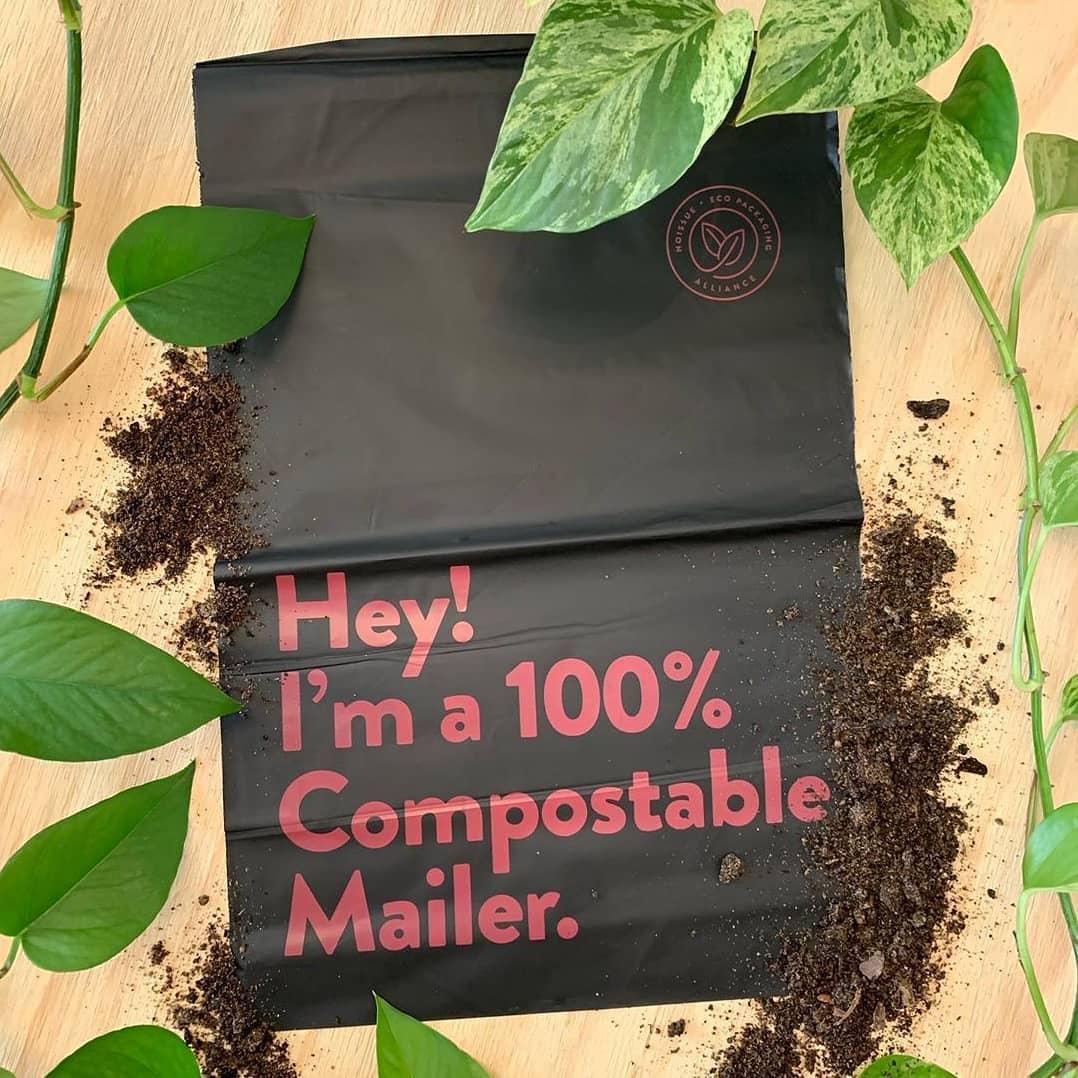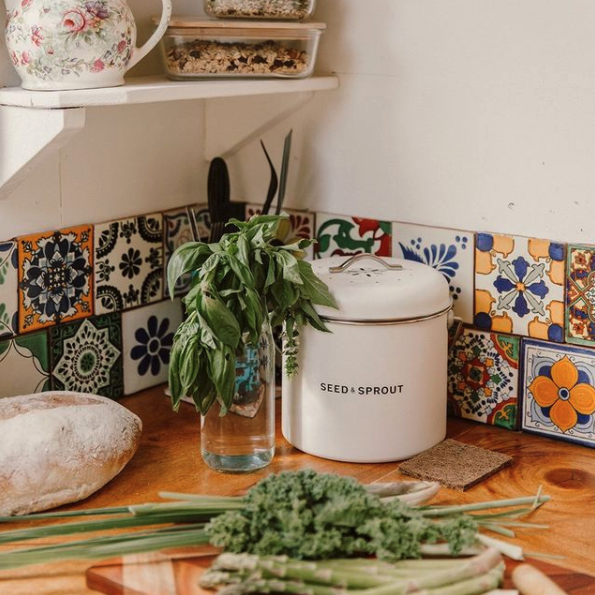
How to Compost at Home: A Guide to Getting Started
No matter where you live in the world, it's possible to start a compost at home. Here's our guide to setting one up.
By Brianna Zuniga — 15 April, 2021
Composting isn’t as tricky (or as stinky!) as you may have been led to believe. It's possible to do it in any location, as long as you understand the basics. Follow our guide to learn about why it's important, how it works, and how to properly dispose of compostable packaging products.
What is composting and why should you do it?
In essence, composting is nature's way of recycling by breaking down organic waste such as food scraps.
When these materials decay, they turn into a valuable fertilizer that can be used to provide a vast array of environmental benefits. Some of these benefits are:
- Improved soil and plant health
- Recycling nutrients back into our planet
- Reduced toxic fertilizers
- Reduced greenhouse gas emissions
- Improved water conservation.
You may ask, isn't it enough to throw my household waste out altogether and send it to landfill? What difference does separating the organic waste make?
While anything that grows does decompose eventually, it can take some time! Composting speeds up that process by providing the ideal environment for decomposing organisms (worms, fungi, and bacteria) to do their thing and break down organic materials.

When organic matter in your trash (like food) goes to a landfill, it can have negative consequences. Toxic materials that are in household hazardous waste can slow and disrupt the organic composting process. This also emits methane into our air, exacerbating climate change.
Then there's also the problem of waste management. Landfills are a serious burden on the planet and increasingly economically costly.
In 2019, the average cost to landfill municipal solid waste (AKA everyday items that are discarded by the public) in the United States was around $55 per ton. The United States alone generated more than 292 million tons in 2018.
Billions of dollars go to managing landfill waste when we could be helping our economy and our planet by better managing our waste at home (and creating a valuable fertiliser for our environment in the process!)
Why did noissue create compostable packaging products?
Did you know that plastic packaging is the main contributor to plastic waste in our landfills, responsible for almost half of the global total?
At noissue, we have created all of our packaging products with circularity in mind to give businesses eco-friendly options and keep single-use materials out of circulation.
This means every product you see with noissue branding is either compostable, recyclable or reusable. Compostable packaging in particular has a lot of sustainability value because it breaks down in a 100 percent regenerative way.
Our Compostable Mailer is TUV Austria certified and made from PLA (plant materials such as corn and wheat straw) and PBAT, a bio-based polymer. They break down within six months at home and three months in a commercial environment.

As well as this, our Kraft Mailers, Shipping Labels, Stickers, Cards and Foodsafe Paper are a great addition to at-home indoor and outdoor composting. This is because they're printed using soy-based inks, are free of chemicals and are made of cardboard and paper, which helps with the carbon-nitrogen ratio.
Composting these products keeps them out of landfill and places valuable resources right back into our economic, environmental, and social systems.
How to get started on your composting journey
If you've received some sustainable packaging from a business and want to dispose of it correctly, then today's the day to start a compost!
The most important factor to consider before you create one is your living situation. If you live in a complex or apartment dwelling, an indoor set-up will be the best option.
Indoor composting is the simplest solution for those without a backyard (and without a green thumb) as you can purchase a special bin that sits in your kitchen, put your organic food waste in it and drop this waste off at a commercial facility or communal neighbourhood bin every 1 to 2 weeks.
Sticking to this timeline will reduce bad smells and the risk of pests or insects lingering.

You can find a commercial facility near you through websites like Find a Composter.
Another option your city may offer is a compost collection service through their trash and recycling management, which provides a designated bin organic waste can go in. Check your local council's website to see what's available in your area.
Some forward-thinking cities are also starting compost collection sites at farmers markets, community gardens, and local farms. Similar to drop-off facilities, you can bring your scraps either in a reusable container or a compostable trash bag and dump them in the designated communal bin.
If your city doesn’t have these options available yet, then consider being the one to lead a new initiative. Talk to your landlord about starting a composting bin on your property or team up with a community garden, farm, or farmers markets in your area to start a composting site.
If you do have a backyard, then you can create an outdoor compost pile and repurpose the material back into your own soil – win, win!

Outdoor composting requires a bit more attention to detail in terms of what goes into the pile. While animal products can often be composted in commercial systems, you should avoid putting items such as dairy products, fats and oils, meat or fish bones in a backyard set-up.
This is because they can attract unwanted animals and insects to your backyard, release substances harmful to plants and soil and leave pathogens in the final compost material.
As a guide, backyard composting requires three ingredients to be healthy:
- Green materials for nitrogen production: grass clippings, yard waste, plants, fruit and vegetable scraps, and coffee grounds.
- Brown materials for carbon production: twigs, dead leaves, branches, and organic paper and cardboard (like our packaging).
- Water to nourish the waste and organisms.
Jen Zuklie is the CEO and founder of Swoondle Society, a marketplace for parents to trade their children's clothing, and a home composter based in Long Island, New York.
Here's her top three tips for outdoor composting:
1. Get the right tools. "We use the barrel style tumblers that are on 'legs' to make airflow and rotation easy while keeping critters out. I would also recommend two bins, so after one fills, you can let it rest and decompose while you fill the second."
2. Keep a small bin in the house, too. "We use it periodically take the scraps to the bigger outdoor bin."
3. Make sure you use the compost 'tea' or liquid. "This is gardening gold! Dilute it and use as a very circular, organic fertilizer."

Wrapping it up
We hope this has helped you get started on your composting journey! If this article has helped you, then send it to a friend or family member who could use a little help in becoming more environmentally friendly.
If you want to keep learning, here are a few additional resources to check out for more composting tips and tricks: